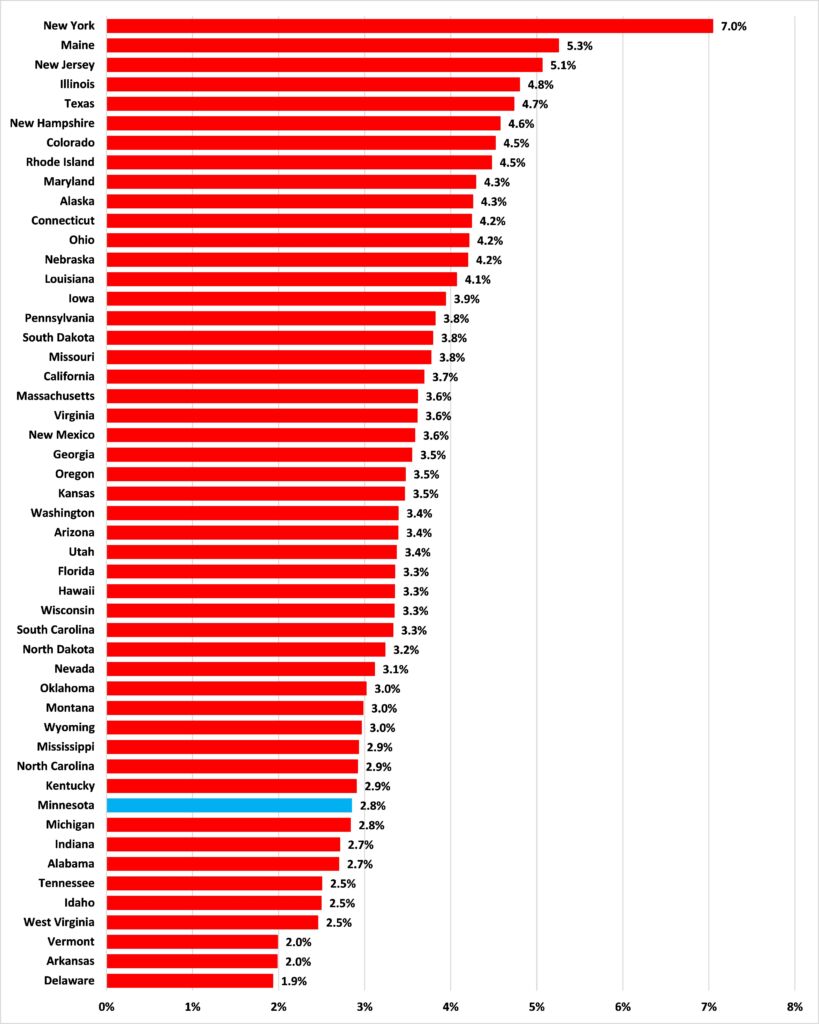State or local government: Who taxes you in Minnesota?
Minnesotans are some of the most heavily taxed citizens in the United States. In our Give It Back report, we noted that at 10.2%, Census Bureau data showed that in 2019, Minnesota had the 6th highest ratio of state and local sales, property, and individual income tax revenues as a share of Personal Income out of the fifty states and District of Columbia.
But if we break that down further, we see that this burden is imposed by the state government to a much greater degree than elsewhere in the United States.
Figure 1 shows that in 2019*, Minnesota’s state sales, property, and individual income tax revenues amounted to 7.4% of Personal Income, the 3rd highest share in the United States.**
Figure 1: State sales, property, and individual income tax revenues as a share of Personal Income, 2019

By contrast, as Figure 2 shows, Minnesota’s local sales, property, and individual income tax revenues amounted to 2.8% of Personal Income, ranking it 41st among the United States.
Figure 2: Local sales, property, and individual income tax revenues as a share of Personal Income, 2019

In short, Minnesota is one of the most fiscally centralized states in America. This is by design. Giving state government the responsibility of raising the majority of tax revenues in the state also gives it the opportunity to spend the majority. As revenue is centralized, so is spending and this, it is argued, allows for greater equality of spending across the state even where resources might differ substantially.
*The COVID-19 pandemic makes numbers for 2020 somewhat unrepresentative
**The District of Columbia is excluded from this analysis as it only has local revenues